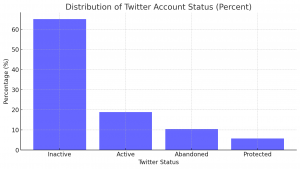Analyzing Two Eras of Social Media: How Bluesky Compares to Twitter’s Beginnings
Back in 2008, the internet marketing landscape was in a unique state of growth, where blogs flourished as vibrant hubs for engagement. Twitter had just started making waves, breaking through as a social network focused on professional connections rather than personal updates like those on Facebook. Inspired by a thought-provoking post from Jeremiah Owyang (which he later removed), I saw an opportunity to compile a comprehensive list of internet marketers worth following on Twitter. At the time, the idea of curated lists was still novel, and social media for professional networking was just emerging. Andy Beal graciously hosted my list on Marketing Pilgrim, and it had a surprisingly long-lasting impact, sparking engagements that continued for years.

Fast forward to 2024, and a new player is capturing attention: Bluesky. The parallels between Twitter’s early days and Bluesky’s emergence today are worth exploring. Both platforms carried a sense of novelty, but they approached online community building and content discovery differently. In the early days of Twitter, features were basic and innovations were often driven by the community itself (like the simple “RT” to share content).
Industry veterans like Rob Bucci, who created tools to streamline Twitter engagement, played a crucial role in building the platform’s usefulness. For example, his tool made it easy for users to quickly follow everyone on Marketing Pilgrims list.
Today, Bluesky is experimenting with list features reminiscent of those early community efforts. This reflection is not just about nostalgia but also a meaningful data comparison: examining engagement rates, user migrations, and platform appeal.
The Data Behind Twitter’s Decline and Bluesky’s Rise

Revisiting my original list of internet marketers, I manually reviewed and compiled the statuses of accounts to understand who has remained active, who has switched platforms, and who has stepped back from social media. Out of the 203 individuals who made that original list of Internet Marketers on Twitter, about 17% have migrated to Bluesky that I could find. Roughly 20% of the original list members are still active on Twitter today, demonstrating both continuity and change in social media habits.
From this data, several trends emerge:
- Platform Adoption and Decline: The drop in active engagement on Twitter can be attributed to various factors: career changes, evolving interests, or broader events like political shifts and controversies. This has created an opening for platforms like Bluesky, which appeal to users looking for a fresh start.
- The Appeal of Bluesky: The adoption rate of 17% shows that while Bluesky has attracted a portion of Twitter’s early adopters, it hasn’t entirely replaced Twitter’s role in professional networking. The platform’s built-in list feature feels like a thoughtful attempt to improve user discovery and create a more organized, community-driven experience.
- Active vs. Abandoned Accounts: Understanding who has stayed active or chosen to abandon social media reveals much about user behavior over time. Factors such as Elon Musk’s acquisition of Twitter and content moderation debates have influenced user retention and migration.
Where Do We Go From Here?
The beauty of the open internet lies in its adaptability and the opportunities it presents for individuals and communities to reclaim control over their audiences. While Twitter in 2008 was a frontier for open conversation, Bluesky today reflects a maturing ecosystem, where data privacy, user ownership, and decentralized control are becoming more critical.
For anyone invested in the evolution of digital platforms, analyzing shifts in engagement and platform dynamics is essential. As we look ahead, platforms that prioritize an open and user-controlled experience are likely to shape the future of social media.


